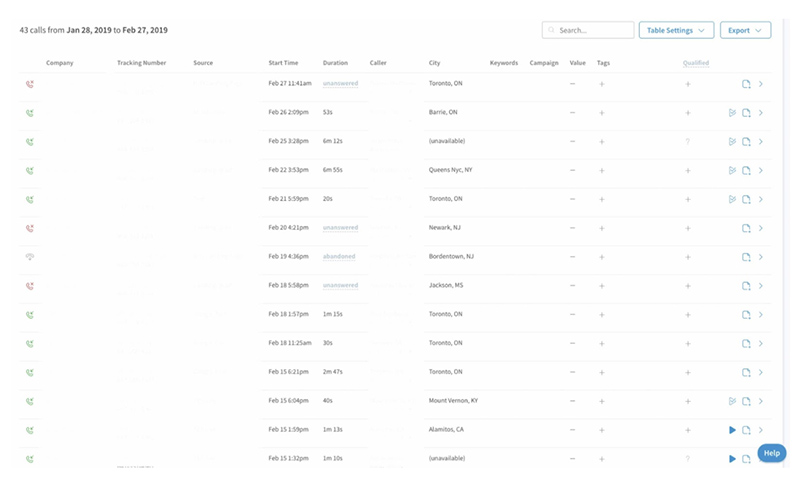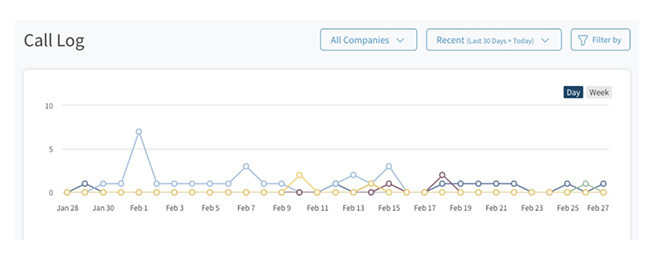Most companies and marketers measure the success of digital advertising by analyzing a series of data such as the visits, clicks, click-through rate, page views, conversions, conversion rate and so on. But in an era where most people spend most of their time on the internet, network technology is also progressing synchronously, we can actually do more optimization other than analyzing those data.
Why is it important to have call tracking?
In modern times, the tracking of website traffic has become widespread, advertising operators can use data analysis tools to track website traffic and channel sources. But website call conversion has always been a blind spot for marketers and digital analysts. Since the call conversion is precisely the main conversion goal of some industries, the amount of telephone consultation varies according to the industry, and the proportion of calls will also be relatively different depending on B2B (business-to-business) and B2C (business-to-consumer) industries. Call optimization for advertisements in some industries is an optimizable point that many companies and marketers will ignore, this may cause the companies to lose a good optimization opportunity and the possibility of ad optimization.
What can call tracking do?
A good call tracking tool is a new technology that has just released in recent years, it mainly tracks the number of times a user dials your phone number on the website and which source channel they come from. The latest call tracking tools can help us answer questions such as: which channel or ad did your conversion come from, whether the conversion was successful or not, which ad channel the call came from, which keyword brings you the conversion, which device this phone call came from, how effective the call conversion on the web page is, and so on. Even the name and location can be displayed on your screen.
If none of these questions can be answered, then the conversion rate of the channel cannot be accurately judged, and the conversion percentage of the phone cannot be evaluated. Businesses or marketers will not be able to optimize website call conversions, thereby improving website call conversion rates and rationally allocate the ads budget.

How do they track, and what method they use to track people’s calls?
Phone Click Tracking
This method is the easiest way to track the phone calls, it collects the total number of phone clicks made by the user and collecting each button click or link click. The disadvantage of this method is that the system cannot track the real data of whether the phone is actually dialed out and the number of times the phone is dialed.
For example, if the user clicks dial on the landing page or ad and then cancels the call, the data will still be recorded as a click, and the click will not disappear because the customer did not dial out. In addition, if traffic reaches the landing page through various advertising channels, the system cannot track which advertising channel the traffic came from, and channel optimization cannot be made.
Multiple-Number and Sub-Channel Tracking
Comparing this method with other tracking methods, this method is relatively simple. The business purchases a sufficient number of phone numbers directly and place different numbers on the corresponding channels for tracking. Different channels have different numbers, and the number of times the channel’s phone number is dialed can directly reflect the performance of the corresponding advertising channel. This method has a certain tracking ability for traditional marketing promotion, but it is only suitable for companies with fewer advertising channels, and it seems a bit difficult for multi-channel data marketing.
For example, enterprises use social media, SEO, SEM, display ads, video ads, and other channels through data marketing, and different channels have different ad groups and delivery methods. This will result in companies needing to register a large number of phone numbers to support the entire advertising operation and tracking, and can not track more detailed data.
Dynamic Call Tracking
Google Dynamic Call Tracking (limited to Google Ads only)
With Google’s call tracking service, the page will automatically generate a temporary phone number, and the terminal still retains the original number of the company. This is the reason why you will see different numbers appear on your landing page during the ad serving process. Every time a user clicks a different ad word to enter the landing page, they will see a series of temporary numbers automatically generated by Google. Due to the uniqueness of the number, whether it is manually dialed or automatically dialed Google can lock the user’s incoming traffic channel.
Google’s call tracking service tracks ad calls, website calls, user clicks on phone numbers, and imports call conversion data. Its advantage is that it can directly reflect the keywords, advertisements, ad groups, and campaigns that promote the best value of phone conversion, it can track users who dial directly by phone, and can also track users who dial manually after reaching the page. And can automatically optimize the automatic bidding strategy of the campaign based on the business goals we set, such as cost-per-conversion. The disadvantage is that it can only be used in Google advertising.

What do they use for tracking and information collection?
Method 1:
In a third-party tool, a huge number of phone numbers can be created to group and connect all advertising channels, ad groups, and advertising keywords one by one, we call this a pool. This method is similar to multi-number sub-channel tracking and Google call tracking. The phone pool created by a third-party tool will automatically assign keywords in the ad to lock in traffic import when the user enters the landing page, in this way we can get the exact source for user inflow. The phone pool can also be locked according to the user, each user will have a number based on their IP address, this number will only be displayed to the assigned designated users.
Method 2:
Create a unique number belonging to the channel and insert a code on the page to change the dynamic phone number. Users who enter the advertising page through different channels will see the exclusive channel number that replaces the original number.
For example, when a user clicks on the page through Facebook, the original phone number on the page will be automatically replaced by Facebook’s unique number, and the person who dialed the channel number must have seen Facebook’s advertisement to see that number.
What can third-party tools (such as CallRail) do?
Call Transfer:
Call tracking tools can not only achieve data tracking, but also provide better call service quality. For example, add manual or computer voice services, greetings, recording notifications, transferring extensions, adding voice mail, and other services that optimize the customer experience.
Recording:
The recording function will be able to record the complete call, not only how your sales deal with the customer but also the content of automatic reply when transferring the phone call. Through recording, you can retrieve the missing information, and you can learn all the user’s transfer options during the call to determine the most frequently consulted service.
Tracking:
The phone tracking tool can do very detailed tracking, it can track the advertising channel, the ad group that made the call, the region, and even which keyword made them call you.
Info Collection:
Through a third-party phone tracking tool, you can collect the user’s name, call area and user’s call number after the user dials the tracking number.


